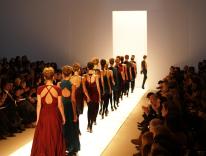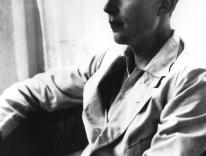Now featured on our home page, Ian Marcus Corbin on the vexing legacy of Catholic jazz composer and pianist Mary Lou Williams, who in 1969 received a commission from the Pontifical Commission on Justice and Peace to compose her third Mass, called Music for Peace:
As the 1970s began, Williams turned her energy to the task of seeing this Mass celebrated in a symbolic center of Catholicismeither St. Peter's Basilica or New York's St. Patrick's Cathedral. To her Catholic friends and boosters, the compositiona bright and exuberant romp through various jazz styles, along with some pop-rock and funk tingesseemed the perfect liturgy for a new postVatican II Catholicism, an ebullient departure from stiff, musty Eurocentrism. But many clerics Williams approached expressed serious reservations. Church leaders in both Rome and New York repeatedly offered to stage recitals of the piece, but declined to accept it as a setting for the Mass. Doggedly undeterred, Williams approached New York's Cardinal Terrence Cooke (she would later recount chasing him across the campus of Fordham University), who assented, hoping such a move could help draw young people back to the church. In February 1975, "Mary Lou's Mass" was finally celebrated, and Williams left St. Patrick's in raptures.This breakthrough did not, however, mark the dawn of a new era. Williams's repeated attempts to have her composition performed as a Mass in the Vatican were unsuccessfuland thirty-seven years later jazz remains, at the very best, on the periphery of liturgical music in America. This fact needs some explaining, because, as Williams always insisted, jazz is the only serious art form created exclusively in America. And it is indeed serious art; the highest achievements of jazz belong to the first tier of great Western music. So why hasn't jazz found a more central place in the liturgical life of the Catholic Church in America?
Read the whole story (which includes video and audio links to performances and interviews) right here.


